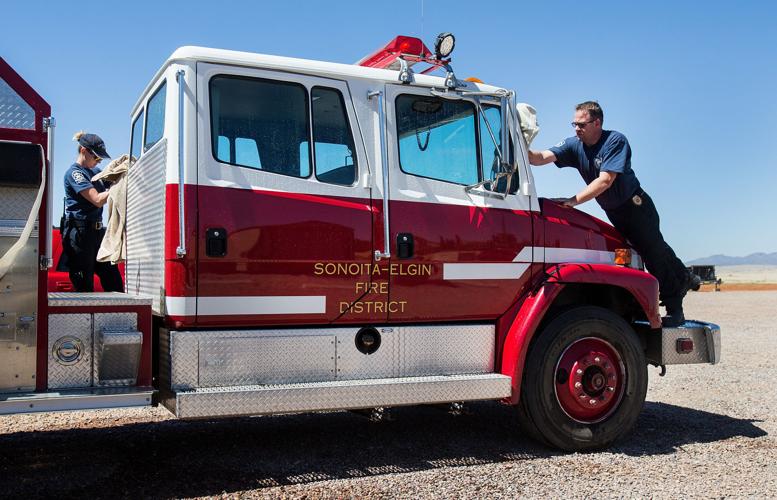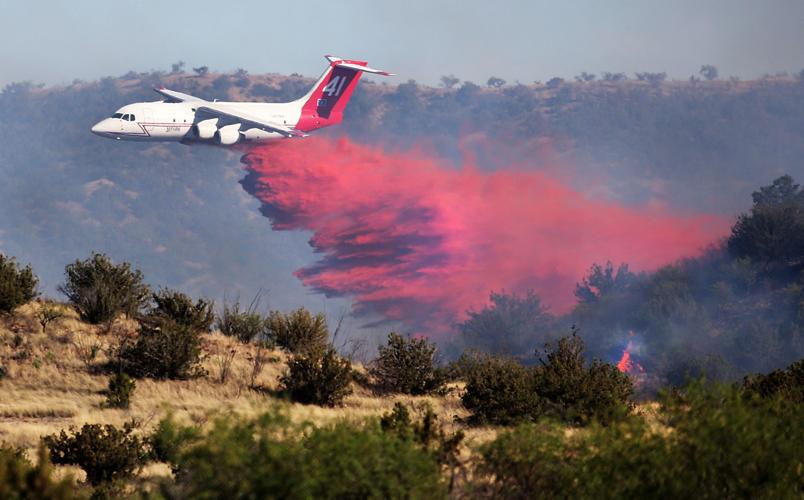Wildfires have ravaged California and other parts of the West this year — but it’s been a relatively mild fire season in Arizona — so far.
The number and acreage of wildfires in Arizona — including public lands near Tucson — are considerably lower this year than in 2017 and some previous years, according to state and federal officials.
By this time last year, Arizona had been hit with 1,481 fires that blackened a total of 357,470 acres, according to the Arizona Department of Forestry and Fire Management. But this year to date, 1,345 fires have burned much less land: 89,650 acres.
“It wasn’t as active in terms of fires as we saw last year, especially in Southern Arizona,” said Tiffany Davila, spokeswoman for the Department of Forestry.
By comparison, years such as 2011 were marked by massive fire activity across the state. Among the big blazes that year: The Horseshoe 2 Fire in the Chiricahua Mountains southeast of Willcox burned 223,000 acres, destroying 23 buildings. The Monument Fire in mountains near Sierra Vista consumed 32,053 acres. And the explosive Wallow Fire in the Apache National Forest wiped out 538,000 acres of pine forest.
Davila cited several possible reasons for the reduced fire activity in Southern Arizona and elsewhere in the state this year.
“One of the reasons is that we went into (mandatory) fire restrictions in Southern Arizona early” — on May 1, she said. “We also had a lot of firefighters and crews prepositioned across the state, which allows us to respond more quickly to fires. And we were really pushing our fire prevention messaging.”
Other possible factors include weather patterns and events such as lightning strikes.
SOUTHERN ARIZONA FIRES
The 1.78-million-acre Coronado National Forest is a vast government landholding in Southern Arizona — and forest lands typically have lots of wildfire activity.
This year, it has been less intense than in some previous years, such as 2011.
“The majority of fire behavior we experienced this year was not as aggressive as we have seen in some other years,” said Heidi Schewel, spokeswoman for the Coronado Forest. “The explanation lies somewhere within the equation of fuels, weather and topography that drive fire behavior, coupled with response of fire suppression crews and equipment.
“A number of factors that could have combined and contributed to more active fire behavior didn’t — including remote locations, delayed response time by firefighters, more severe weather conditions and winds aligning with topographic features,” Schewel said.
She said the forest has had 64 fires so far this year, including human-caused and lightning-caused blazes.
The fires have consumed a total of 8,166 acres — much less than in some previous years. In 2011, for example, fires burned across a total of 365,000 acres of the Coronado Forest.
“A number of things worked in our favor this year,” Schewel said. “We received additional staffing from severity funding which included law enforcement officers and forest protection officers assigned to patrol and enforce fire restrictions. In addition, one or two fire engines were assigned to each ranger district to patrol and enforce fire restrictions and to respond to wildfires — meaning more boots on the ground educating and enforcing.”
She added that fire crews were positioned in the Coronado Forest to augment firefighting forces and respond to wildfires.
“We worked cooperatively with other land-management agencies in providing fire prevention and education, and in coordinating information sharing regarding fire safety and fire restrictions,” Schewel said.
Another federal land site in Southern Arizona, Saguaro National Park, with units east and west of Tucson totaling 91,327 acres, has fared extremely well of late when it comes to fires.
“We have avoided major fires over the last couple of years,” said Ray O’Neil, chief ranger at the park.
“Saguaro National Park has experienced two wild land fires in 2018,” O’Neil said. “Both were abandoned illegal campfires and the total acreage for each was less than 0.1 acres. In 2017, the park had five fires. Three were abandoned illegal campfires each totaling less than 0.1 acres. And two were lightning-caused fires. One was 1.5 acres and the second was 0.25 acres.”
NOT OUT OF THE WOODS
Recent, but spotty, monsoon rains reduced the fire danger and prompted the cancellation of fire restrictions. But officials emphasize that Southern Arizona and the rest of the state aren’t out of the woods yet when it comes to wildfires.
“Summer monsoon rains are sporadic,” Schewel said. “Portions of the forest are still relatively dry. Wildfire potential continues to be present. Fine fuels such as dead grasses respond quickly to environmental conditions and may dry and cure quickly as temperatures rise. Lightning accompanying thunderstorms may also ignite wildfires.
“As monsoons move on and we return to hotter and drier weather, the potential for wildfires increases as conditions become more favorable to wildfire ignition and growth,” Schewel said.





